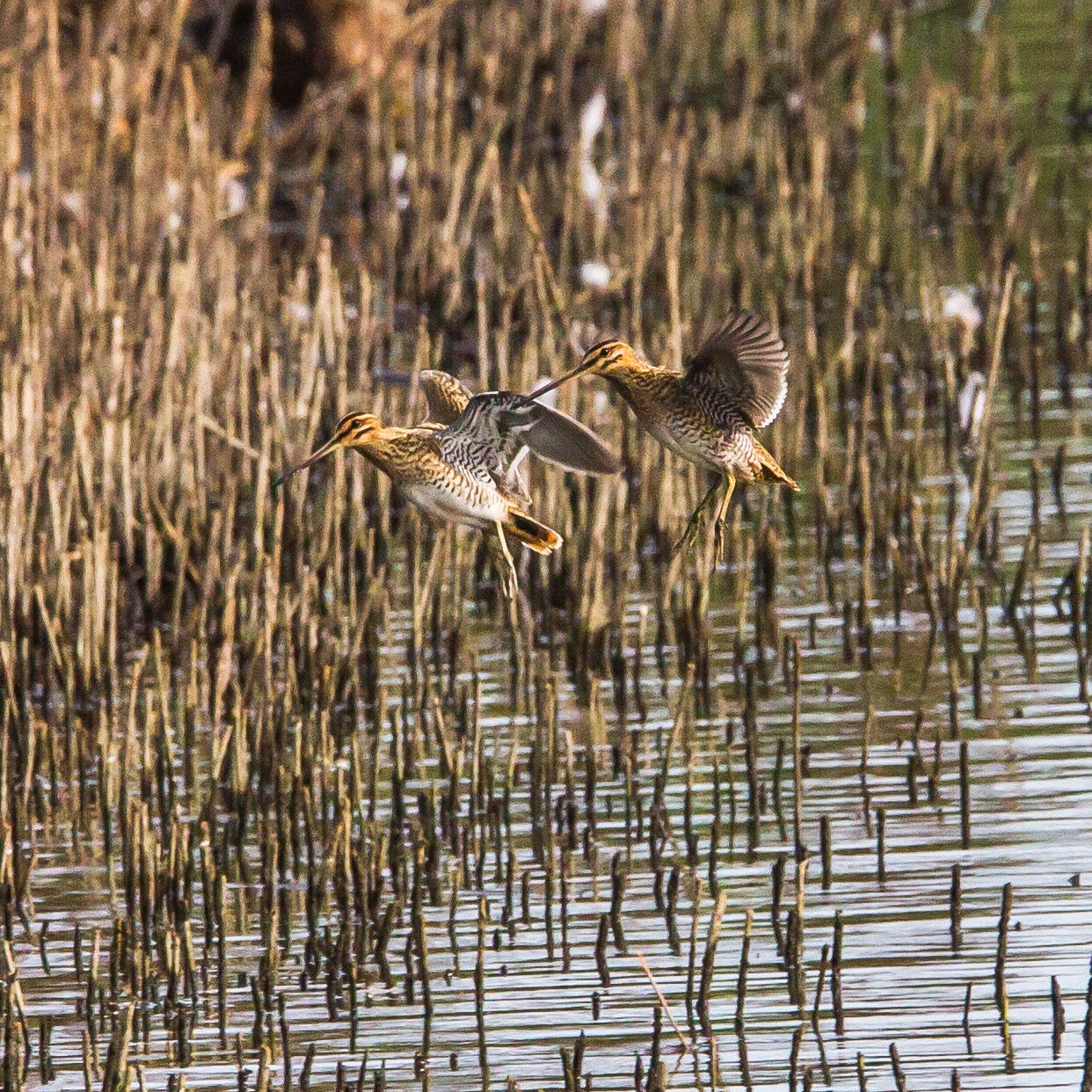 |
| Bird of the year in the rain Whiskered Tern |
When I look back through my postings they trigger memories of some wonderful times this year. I am reminded of the warm summer days the excitement and anticipation of spring and the real pleasure that this year has brought.
Looking through my blog list of special birds there are many. Some of the species on that list are really more scarcities than rarities and many of those are becoming almost annual. Great white Egret has come and gone several times during the year, Glossy Ibis stayed around for a couple of months and Common Crane came through yet did not linger as they have in other years.
 |
| Glossy Ibis (c) Badger |
A Great Grey Shrike turned up briefly this autumn hard on the heels of a Dartford Warbler that was only the third to be found down on the moor. A juvenile Red-backed Shrike spent a day near the farm at Noke in October.
 |
| Dartford Warbler (c) Roger Wyatt |
Bird of the year on Otmoor was certainly the Whiskered Tern that was found by Paul Thomas on a very showery day in April (25th). It was identified at a distance over the phone and about sixteen lucky birders got to see it. Unfortunately for those who turned up at dawn the next day it had left during the night. As far as I can ascertain it was only the second one to be recorded in Oxfordshire.
The other major rarity was a Bee eater seen by a visiting Hungarian birder who had not realised just how unusual a sighting it was. There were a number of them in the country at the time and he was very familiar with the species from his home birding.
Our breeding birds seem to had a good year. The weather was very kind to small passerines and our wading birds had a much more productive season. Lapwing and Snipe appeared to be more
 |
| Juvenile Lapwing |
 |
| Snipe (c) John Reynolds |
successful than for many years. Of the species in serious decline Cuckoos seem to have done well when judged by the number of newly fledged individuals that were seen and photographed over the summer. Most worrying was the lower numbers of Turtle Doves. There were certainly two calling males for much of the summer but we could only confirm two juvenile birds seen in late August. In 2013 we established that they had produced three different broods.
 |
| Turtle Dove (c) Mark Chivers |
At least one female Bearded Tit was present most of the year but did go missing for long periods of time. Another small party of them have arrived this autumn and we can hope that in 2015 they will repeat their breeding success of 2013.
 |
| Bittern and Marsh Harrier both pics (c) John Reynolds |
Both Marsh Harrier and Bittern have become much more common on the moor reflecting their breeding success elsewhere in the country and it may not be long before they rejoin the list of Oxfordshire breeding birds.
In addition to breeders and winter visitors we have had a really good passage of Wheatears, Redstarts, Whinchats and Spotted Flycatchers this autumn.
Beside the birds, the Lizard Lounge by the first screen has offered visitors the chance to catch up with one of our more difficult to see reptiles. A Purple Emperor was a butterfly highlight and a Scarce Chaser, found on the 6th of July, was a new dragonfly species for the county. A tribute to the quality of the habitat that has been created and maintained on the moor.
 |
| Scarce Chaser (c) Tezzer |
I would like to offer my huge thanks and I'm sure that I can speak for all local birders, to David Wilding, Joe Harris and all of the other staff and volunteers of the R.S.P./B.. Their diligence and hard work ensures that we have a wonderful and maturing nature reserve that continually goes from strength to strength.
I would also like to thank the brilliant photographers who selflessly send me their photos every week to put on my blog. If it was just down to me it would be a very blurred affair and I am almost at the point of not taking my camera with me at all.
There is lots to look forward to in 2015.
 |
| So much for 2014 (c) John Reynolds |















.jpg)



.jpg)










.JPG)















